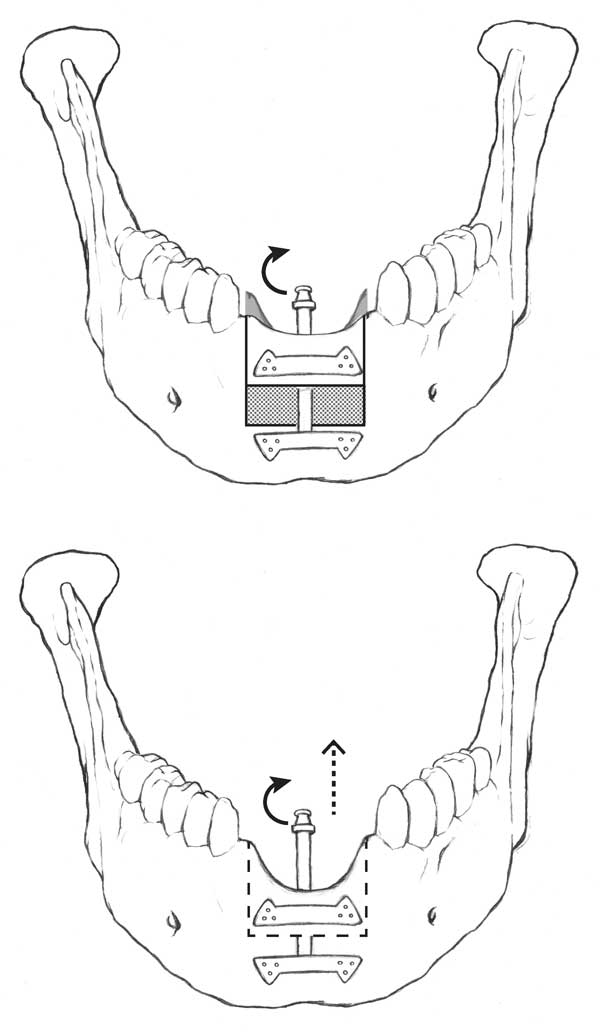Distraction Osteogenesis has become an important part of the oral surgeon’s toolkit, providing a more successful and stable alternative for augmenting the vertical height in alveolar ridge reconstruction.
For a dental implant to support an esthetic prosthesis, it has to be placed in an ideal position in relation to the adjacent structure. If bone volume is inadequate for such placement, it is necessary to correct the deficiency prior to the surgical placement of the implant. This fact is especially important in the esthetic zone since in many cases, any inadequacy will not be camouflaged by the lips.
One of the more difficult areas of alveolar ridge reconstruction is the correction of the vertical height defect. Various bone grafting techniques have been developed and the success rate is largely dependent on the skill of the operator as well as other local factors, such as amount of scar tissue, mouth opening and tightness of oral soft tissue.
The overall success rate for reconstruction of the vertical defect with traditional bone grafting technique is less than ideal in many cases with resorption of the grafted material.
The Fundamentals of Distraction Osteogenesis
The concept of “Distraction Osteogenesis” was attempted in the early part of the 20th century by a few surgeons, but it was popularized by a Russian orthopedic surgeon, Professor Gavriel Ilizarov, who is considered to be the father of the technique.
He developed a protocol in which long bone was surgically cut and stretched with an appropriate device for a lengthening procedure. He was able to control the vector of the distraction and stabilize it during the healing-consolidating phase.
The human body has the ability to form new bone based on the law of “tension–stress force.” When body structures are being stretched gradually, they are being stimulated for further growth and regeneration. To our benefit, both bone and the surrounding tissue are lengthened simultaneously, which is a great advantage in comparison to the traditional bone grafting technique.
The formation of new bone in distraction osteogenesis is equivalent to the healing process of a fracture. Bone producing osteoblasts are being formed as the mesesnchymal cells are being stimulated during the “tension – stress” condition in the callus. During the next twelve to twenty-four months, the bone will continue to remodel and the mature bone produced is similar to the adjacent bone in size and shape.
Distraction Osteogenesis in the Modern Age
With the advent of smaller intraoral distraction devices, the reality has been met with the conversion of a vertically deficient alveolar ridge into a site where proper implant placement can be achieved in approximately three months.
Continued on next page.
 Distraction Osteogenesis Surgical Technique
Distraction Osteogenesis Surgical Technique
- Identify the area of inadequate alveolar bone volume.
- Select a mucosal incision to gain access to the underlying alveolar bone while preserving much of the blood supply to the alveolar bone.
- Two vertical and one horizontal bone cuts are made on the deficient segment of the alveolar bone for the creation of the “transport bone segment.”
- The intraoral distraction device is placed and stabilized with mini bone screws.
- A latency period of one week is allowed for bone callus to form.
- The distraction device is then activated and advanced at 1 mm per day of vertical distraction.
- When the desired height is achieved, the distraction device is left in place for the bone callus to consolidate and mature over a three month period.
- The surgical site is re-entered, the distraction device is removed and dental implant(s) are placed at the correct position which will then allow for fabrication of an ideal esthetic prosthesis.
Advantages of Distraction Osteogenesis
The advantages of this “distraction osteogenesis” technique include over correction of the bone matrix volume, which can easily be re-contoured at a later date. It is an advantage to have more bone available than is needed that can be shaved at the re-entry step.
Another main advantage over traditional bone grafting technique is the concurrent lengthening of the surrounding tissue, such as mucosal tissue, nerves and muscles.
The problem of wound closure (with the potential of wound dehiscence) of an augmented area of the traditional grafting site is not an issue with this distraction osteogenesis technique since soft tissue is also being formed as bone is created at the distraction site. The bone produced is stable and serves as a good foundation for supporting implant(s).

